The O-III light filter (read as “o-three”) is an astronomical accessory designed to improve the visibility of gas nebulae, namely planetary nebulae, supernova remnants and regions of active star formation. The O-III filter passes the green region of the spectrum around the doublet of the spectral lines of doubly ionized oxygen O2+ (or O III), highlighting these lines (495.9 and 500.7 nm) against a darker background of the rest of outer space. Perhaps this is one of the most useful filters for visual observation of nebulae.
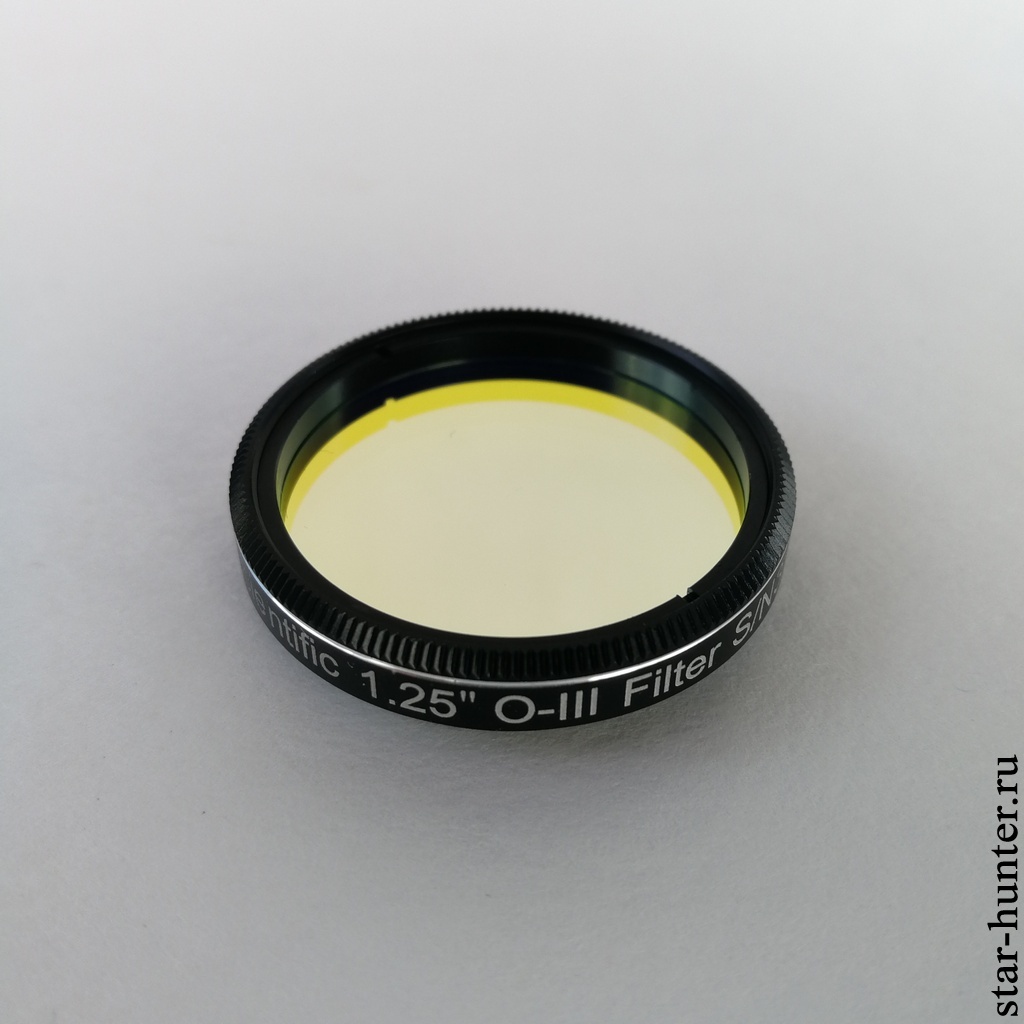
The filter comes in a colored cardboard box with a magnetic lock. Inside the box there is a filter in a plastic box and a bag, sealing material, as well as a filter bandwidth graph.

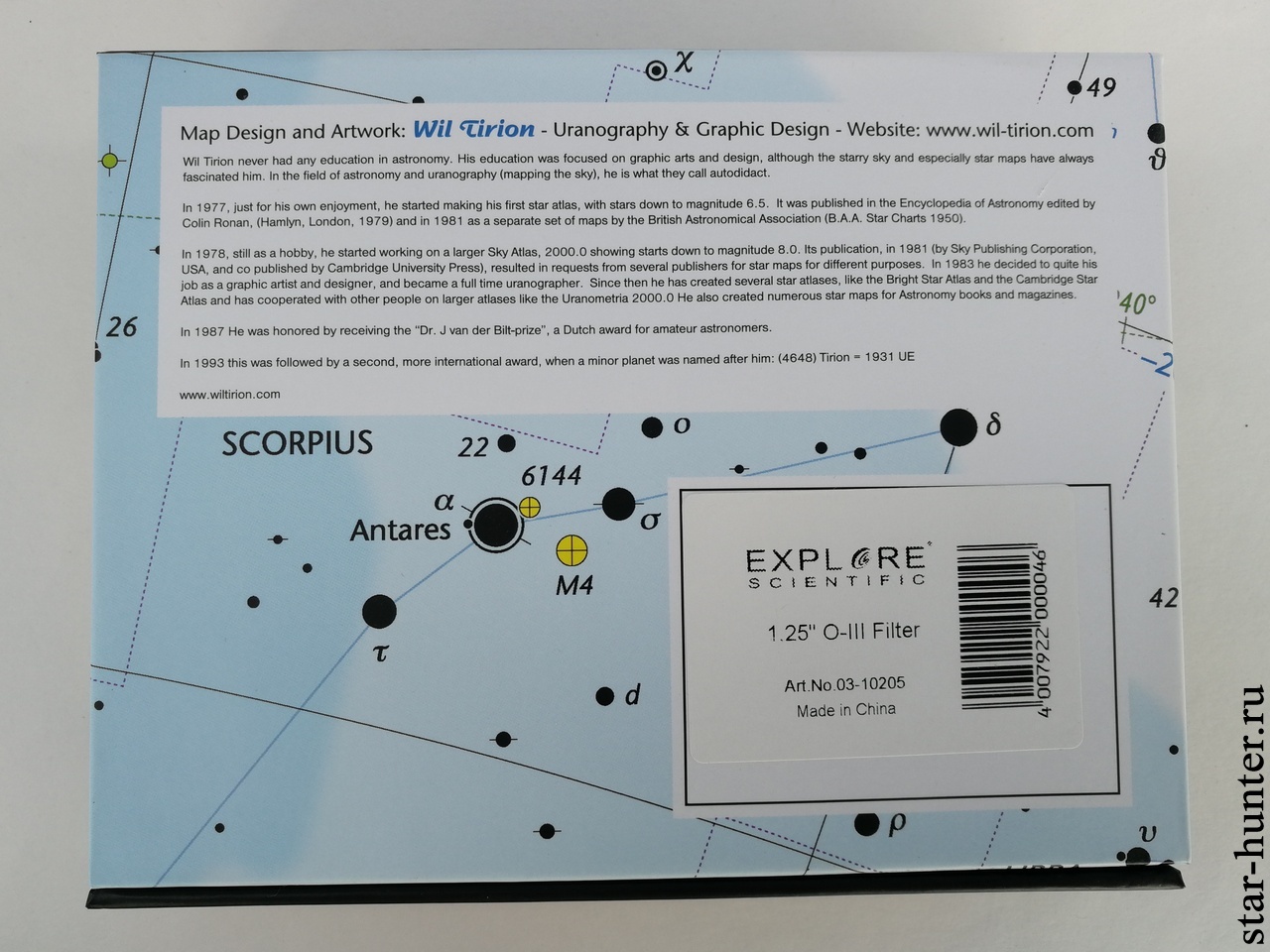
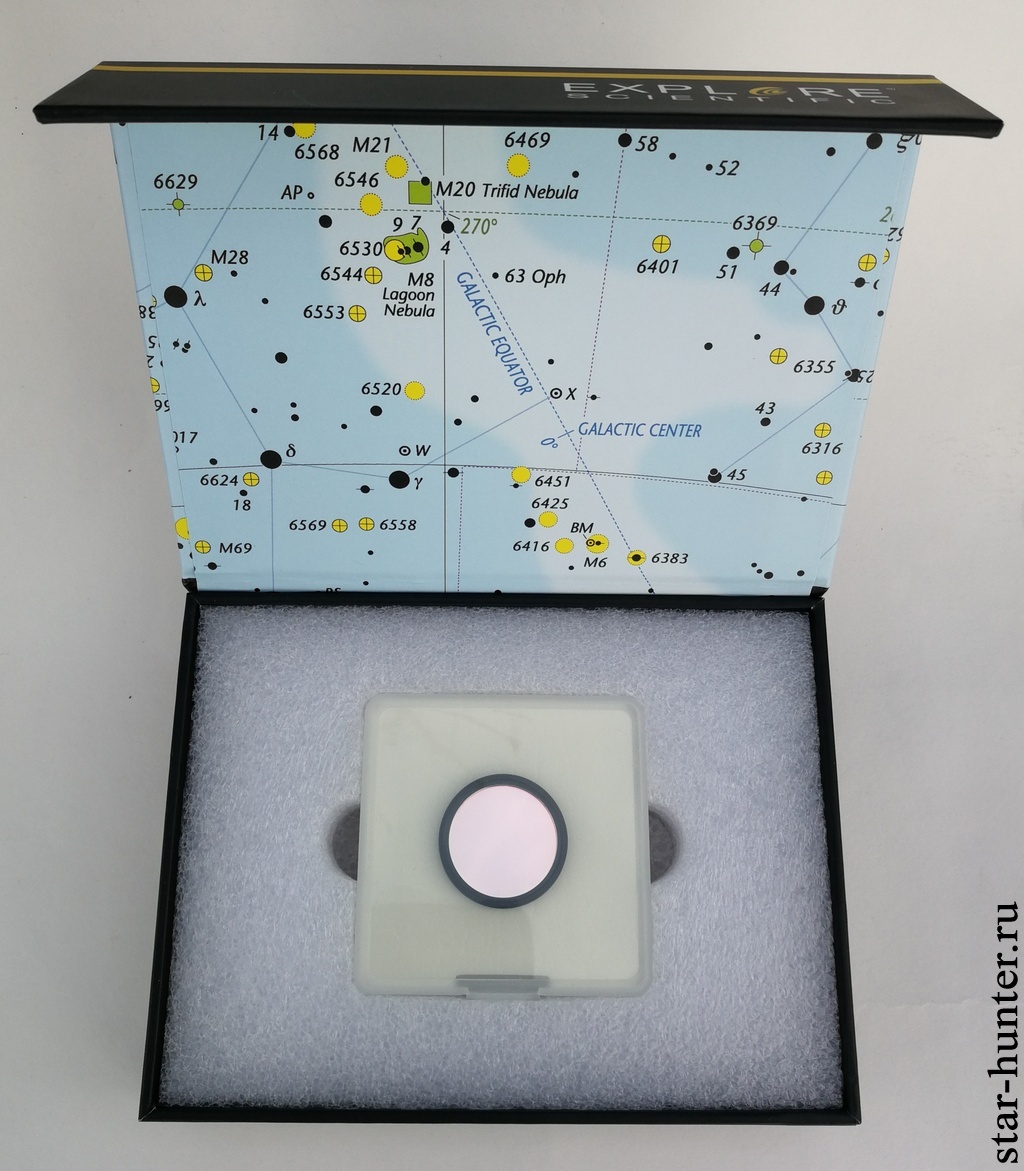
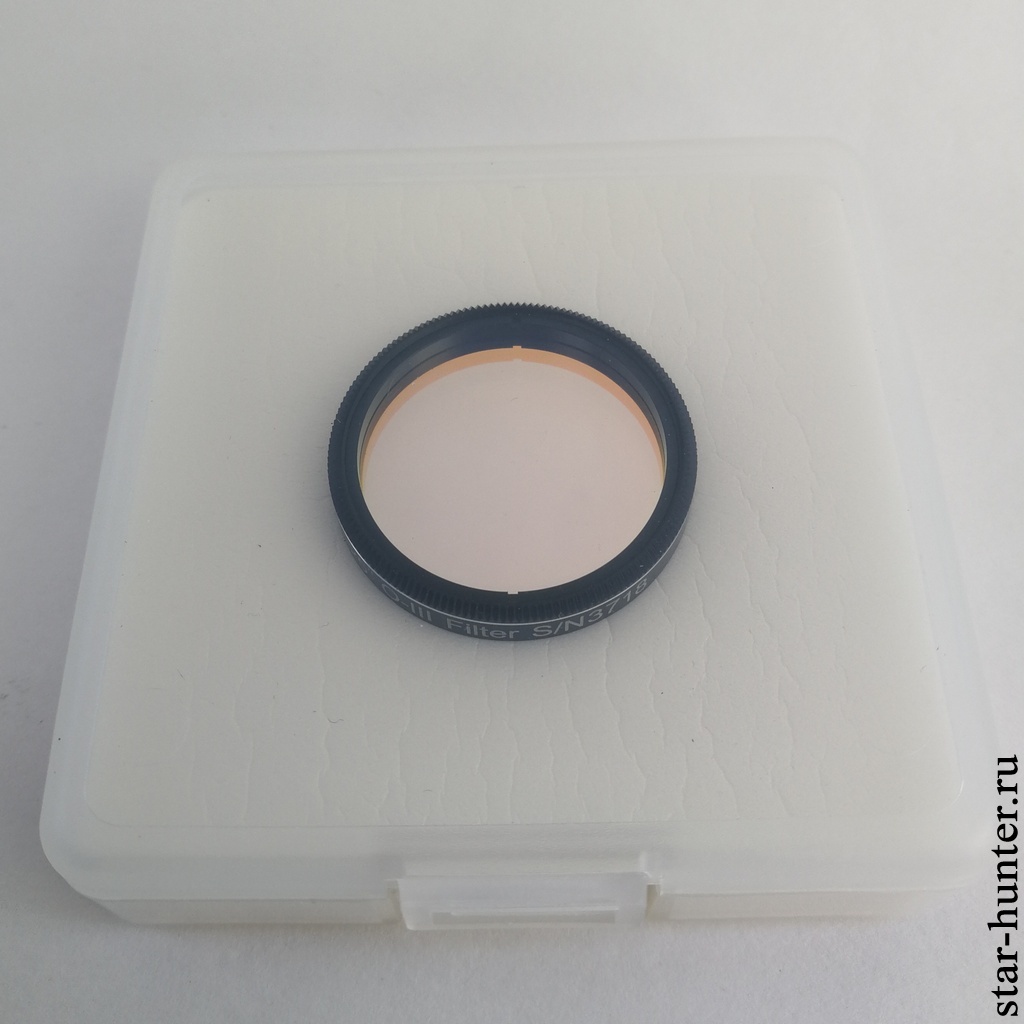
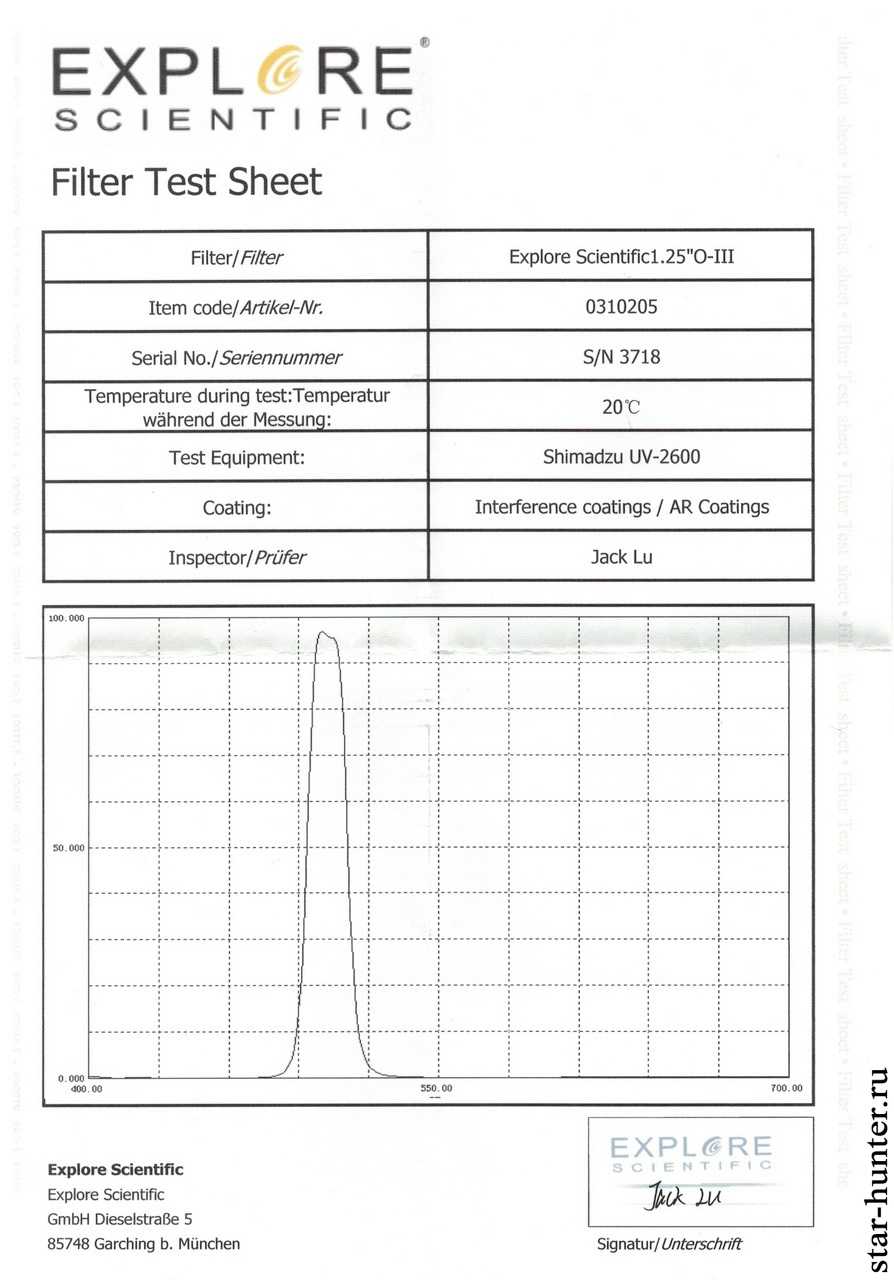
The frame of the filter is metal. No defects or damages were found.
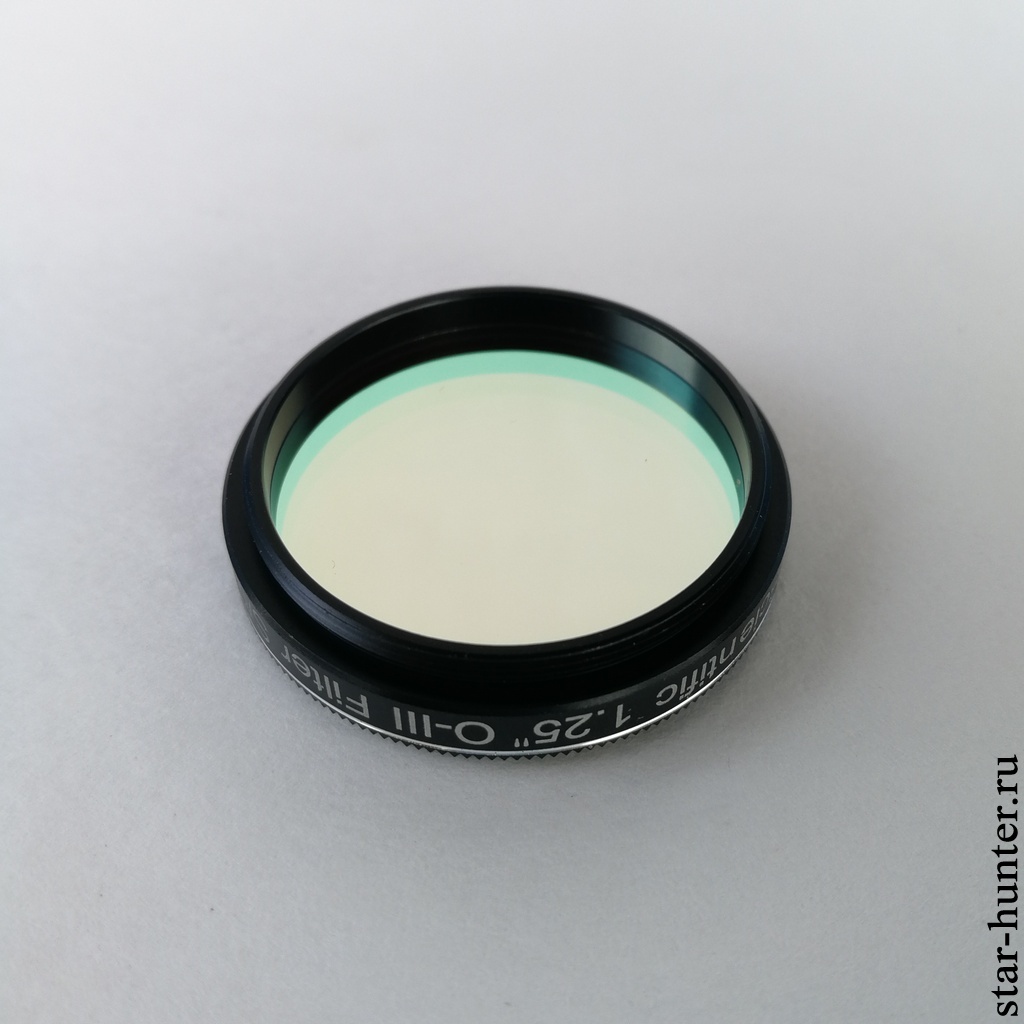
Measurements
Weight: 24 g in a box, 5.4 g without a box
Frame diameter: 31.3 mm
Light diameter at the entrance: 26 mm; at the exit 26 mm
Frame thickness without thread 5 mm
Thread diameter 28.5, height 2 mm, only at the exit
In clearance: dark emerald, to the edge of weak lightening, but without color transition.

Testing with a spectroscope showed that the filter transmits light in accordance with the declared schedule. Leaks in other spectral regions are absent.

Below is the result of a photographic test on the Orion Nebula in high light pollution. For shooting, I used the Celestron NexStar 8 SE telescope, Antares f \ 6.3 focal reducer and the Canon 550Da camera. Exposure time 5 seconds, ISO 3200.
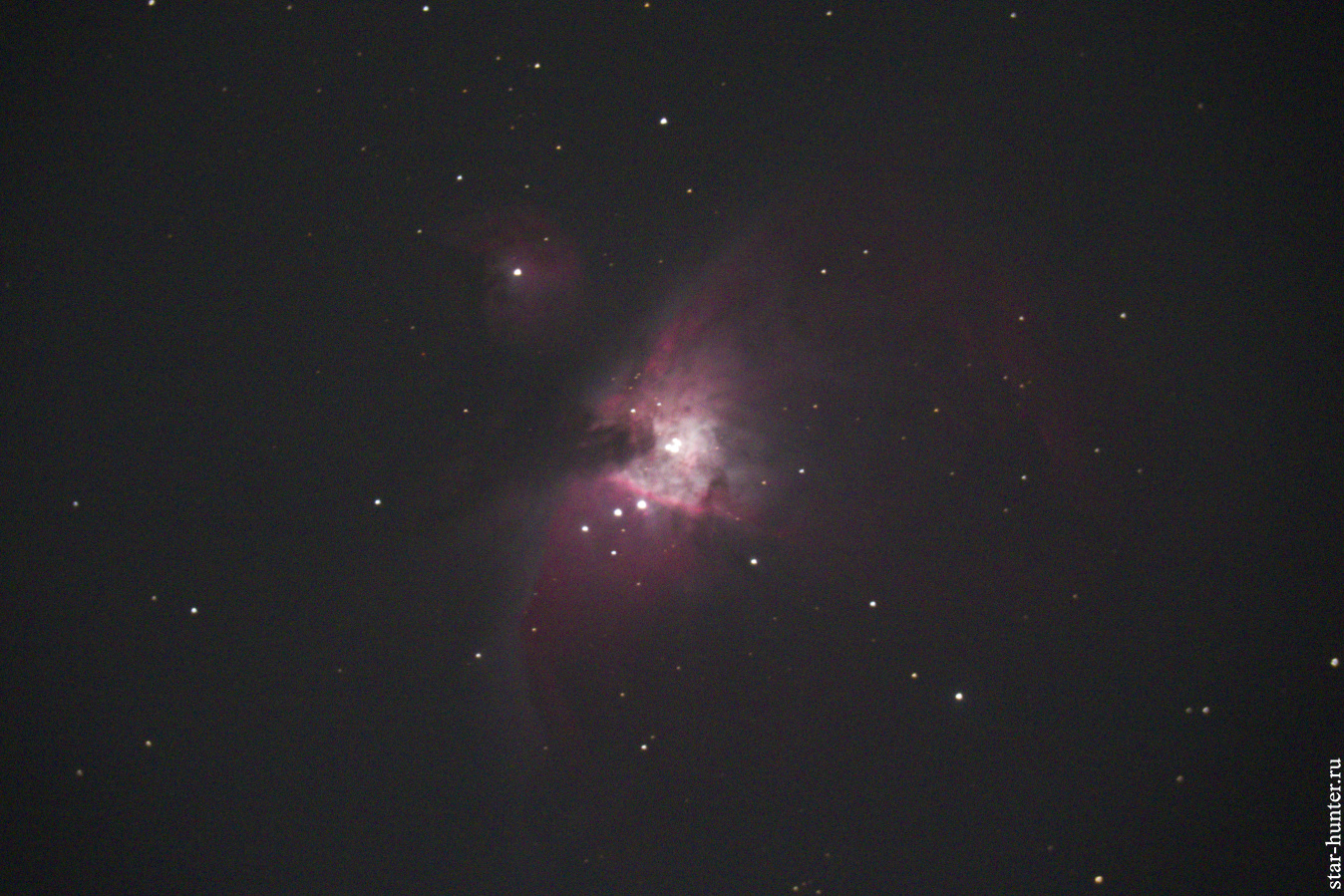
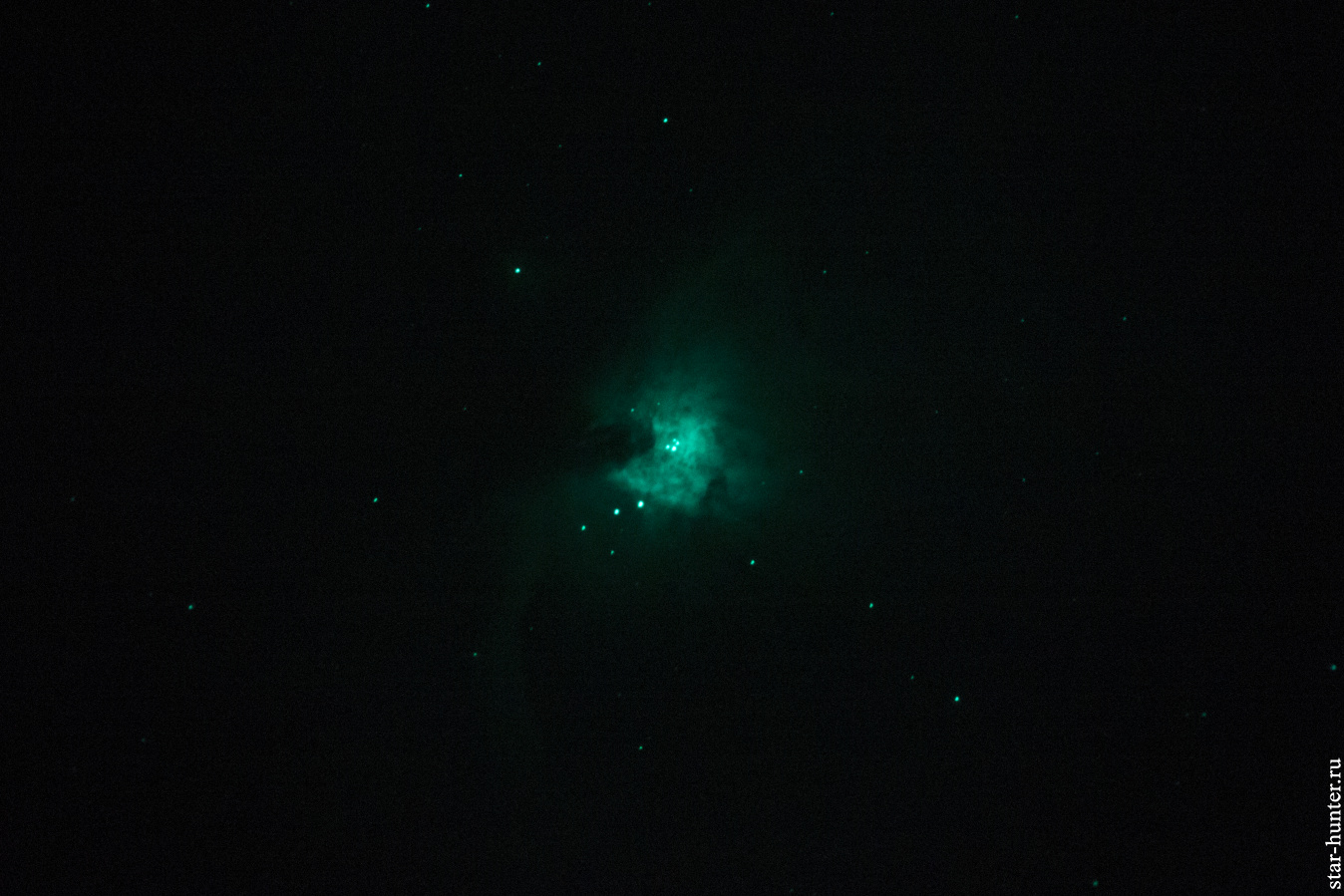
The pictures show that when using the filter, the background becomes darker, the “wings” in the nebula are better distinguished, the contrast of details in the central region has also improved. The filter also showed a similar result during visual observations using the Celestron NexStar 8 SE telescope with a 32 mm eyepiece.
When using the O-III filter, the appearance of many nebulae is literally transformed – for example, the ears of the nebula are better visible in the M 27 Dumbbell, the M 57 Ring immediately catches your eye against a dark background, and the M 17 Omega nebula from a small cloud turns into a clear “2”. Some nebulae without a filter are very difficult to see – for example, the “Veil” in the Cygnus. The O-III filter is suitable for use even with small telescopes (from 70 mm), but for best results it is necessary to use telescopes with a diameter of 150 mm or more.
I thank “Levenhuk” company for the filter provided for testing.